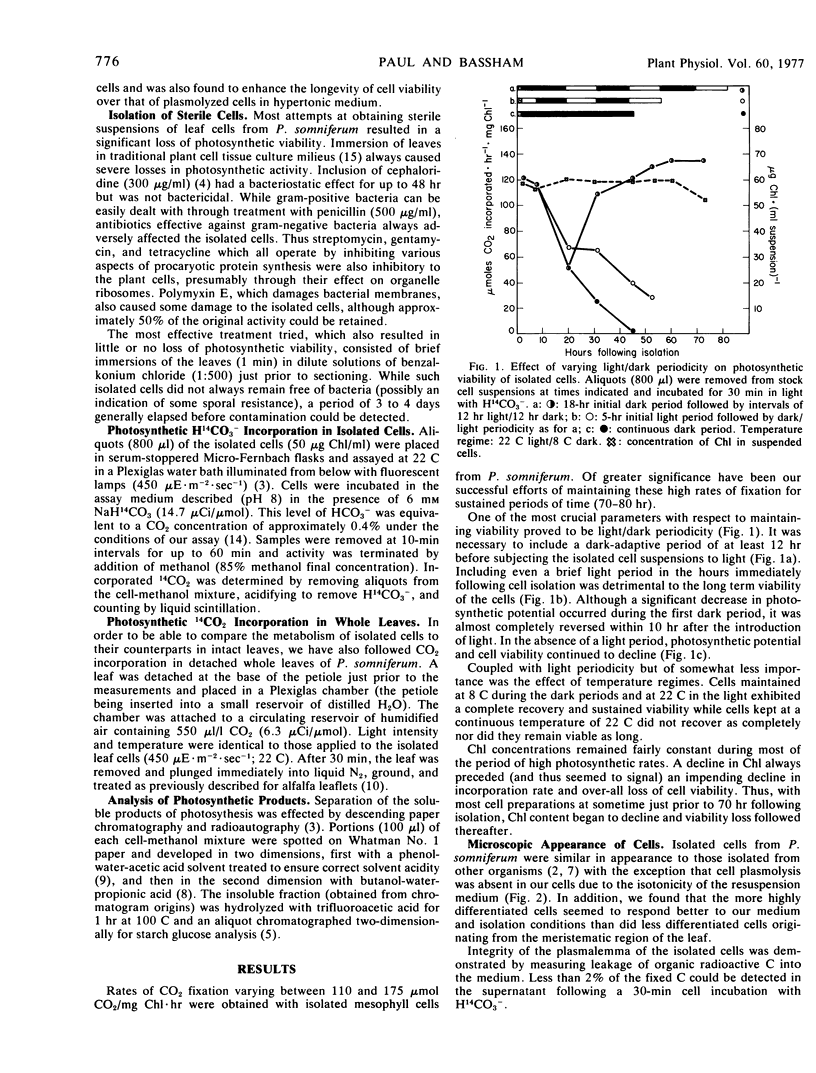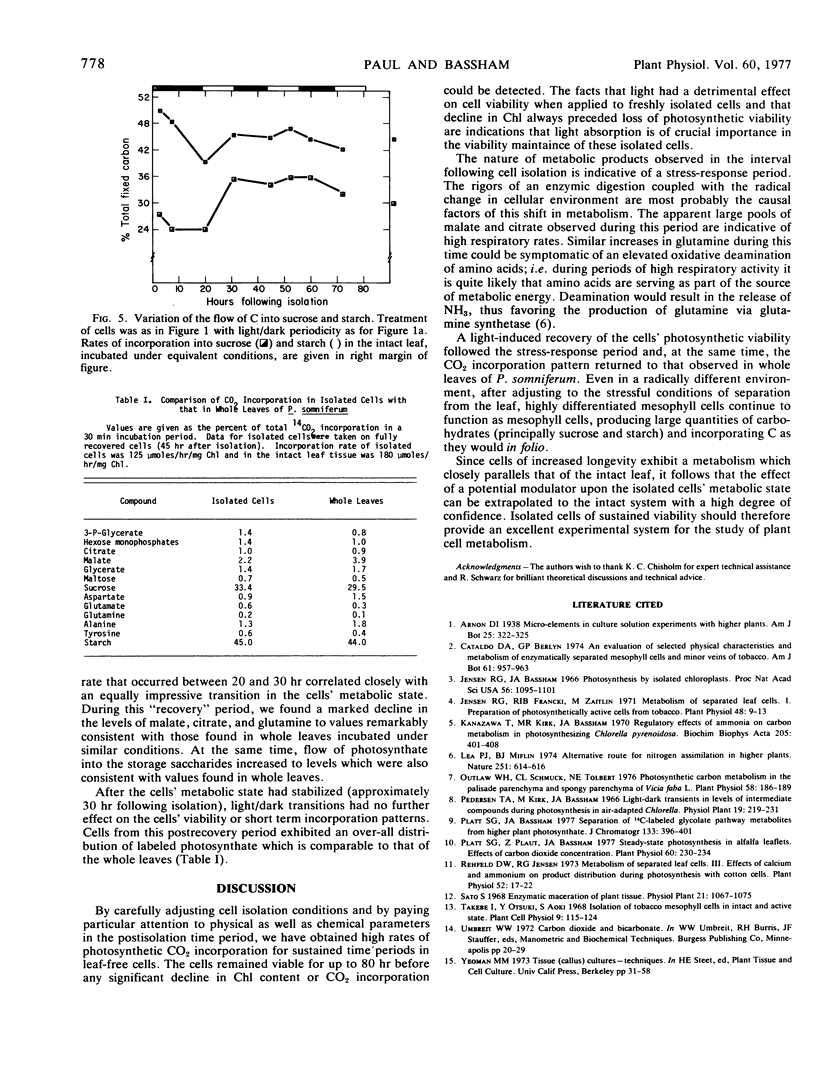Abstract
The establishment and maintenance of high rates of photosynthetic CO2 incorporation in mesophyll cells of Papaver somniferum (opium poppy) depend on a regime of dark and light periods immediately following isolation, as well as carefully adjusted conditions of isolation. Analysis of the incorporation pattern of 14CO2 by the isolated cells indicates an initial “stress-response” period of approximately 20 hours characterized by increased respiratory-type metabolism and diminished photosynthesis. Under the favorable regime, this period is followed by rapid recovery and the reinstatement of a metabolic state strikingly similar to that of intact leaves in which the initial rate of CO2 incorporation is between 110 and 175 μmoles CO2 fixed per mg chlorophyll per hour. The photosynthetic viability of these cells can be maintained for up to 80 hours.
Full text
PDF



Images in this article
Selected References
These references are in PubMed. This may not be the complete list of references from this article.
- Jensen R. G., Bassham J. A. Photosynthesis by isolated chloroplasts. Proc Natl Acad Sci U S A. 1966 Oct;56(4):1095–1101. doi: 10.1073/pnas.56.4.1095. [DOI] [PMC free article] [PubMed] [Google Scholar]
- Jensen R. G., Francki R. I., Zaitlin M. Metabolism of separated leaf cells: I. Preparation of photosynthetically active cells from tobacco. Plant Physiol. 1971 Jul;48(1):9–13. doi: 10.1104/pp.48.1.9. [DOI] [PMC free article] [PubMed] [Google Scholar]
- Kanazawa T., Kirk M. R., Bassham J. A. Regulatory effects of ammonia on carbon metabolism in photosynthesizing Chlorella pyrenoidosa. Biochim Biophys Acta. 1970 Jun 30;205(3):401–408. doi: 10.1016/0005-2728(70)90106-4. [DOI] [PubMed] [Google Scholar]
- Lea P. J., Miflin B. J. Alternative route for nitrogen assimilation in higher plants. Nature. 1974 Oct 18;251(5476):614–616. doi: 10.1038/251614a0. [DOI] [PubMed] [Google Scholar]
- Outlaw W. H., Schmuck C. L., Tolbert N. E. Photosynthetic Carbon Metabolism in the Palisade Parenchyma and Spongy Parenchyma of Vicia faba L. Plant Physiol. 1976 Aug;58(2):186–189. doi: 10.1104/pp.58.2.186. [DOI] [PMC free article] [PubMed] [Google Scholar]
- Platt S. G., Bassham J. A. Separation of 14 C-labeled glycolate pathway metabolites from higher plant photosynthate. J Chromatogr. 1977 Mar 21;133(2):396–401. doi: 10.1016/s0021-9673(00)83504-9. [DOI] [PubMed] [Google Scholar]
- Platt S. G., Plaut Z., Bassham J. A. Steady-state photosynthesis in alfalfa leaflets: effects of carbon dioxide concentration. Plant Physiol. 1977 Aug;60(2):230–234. doi: 10.1104/pp.60.2.230. [DOI] [PMC free article] [PubMed] [Google Scholar]
- Rehfeld D. W., Jensen R. G. Metabolism of Separated Leaf Cells: III. Effects of Calcium and Ammonium on Product Distribution During Photosynthesis with Cotton Cells. Plant Physiol. 1973 Jul;52(1):17–22. doi: 10.1104/pp.52.1.17. [DOI] [PMC free article] [PubMed] [Google Scholar]



